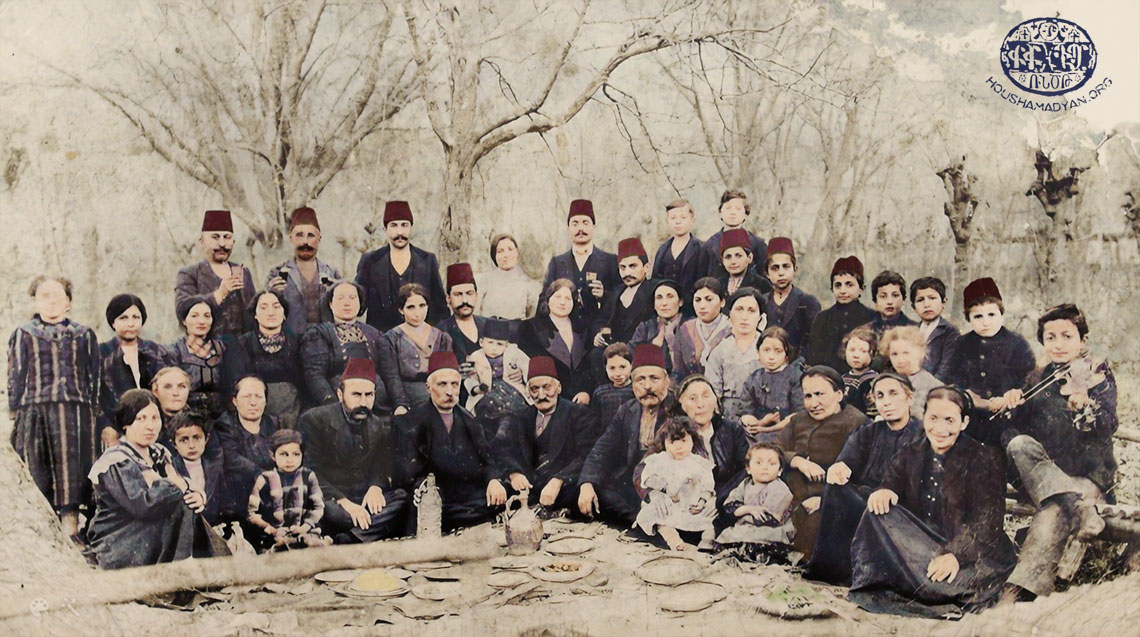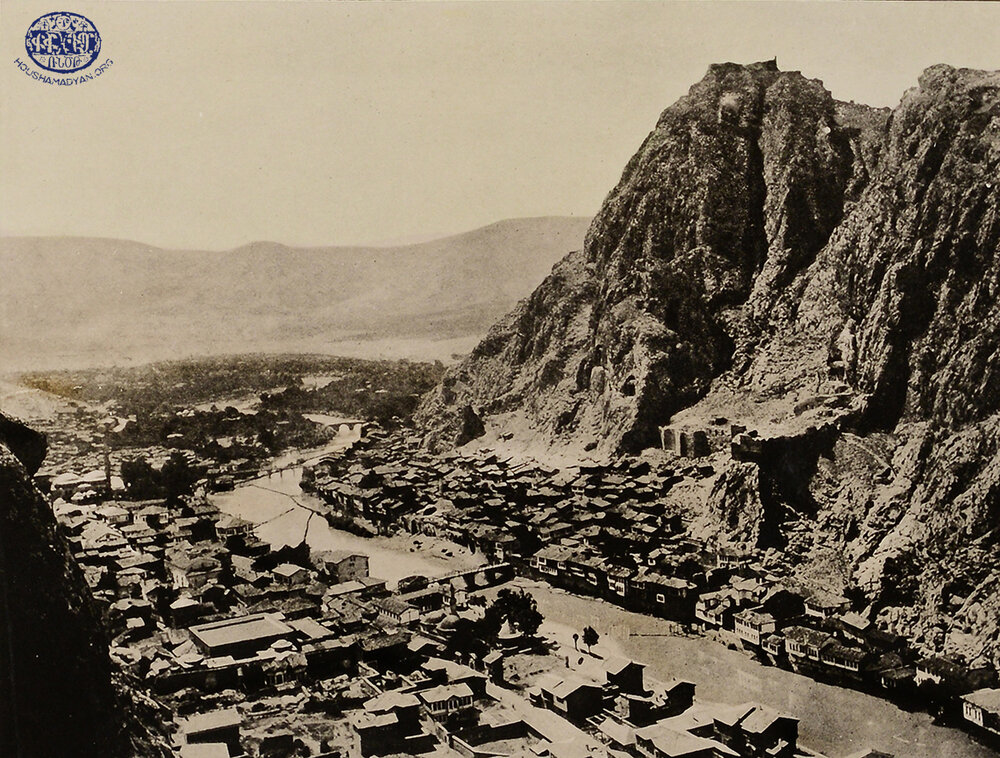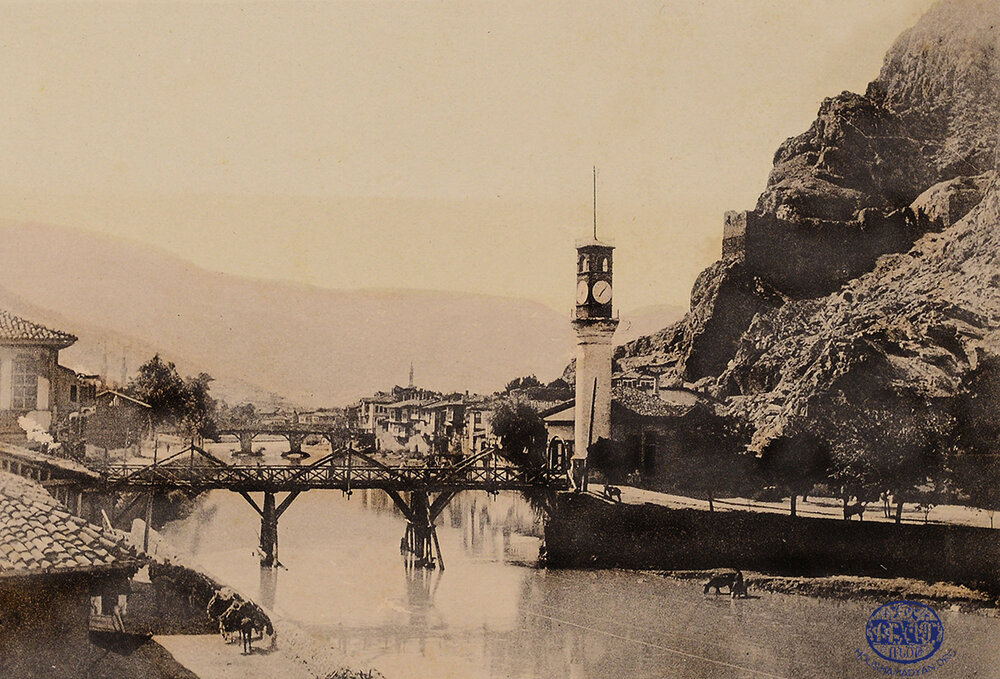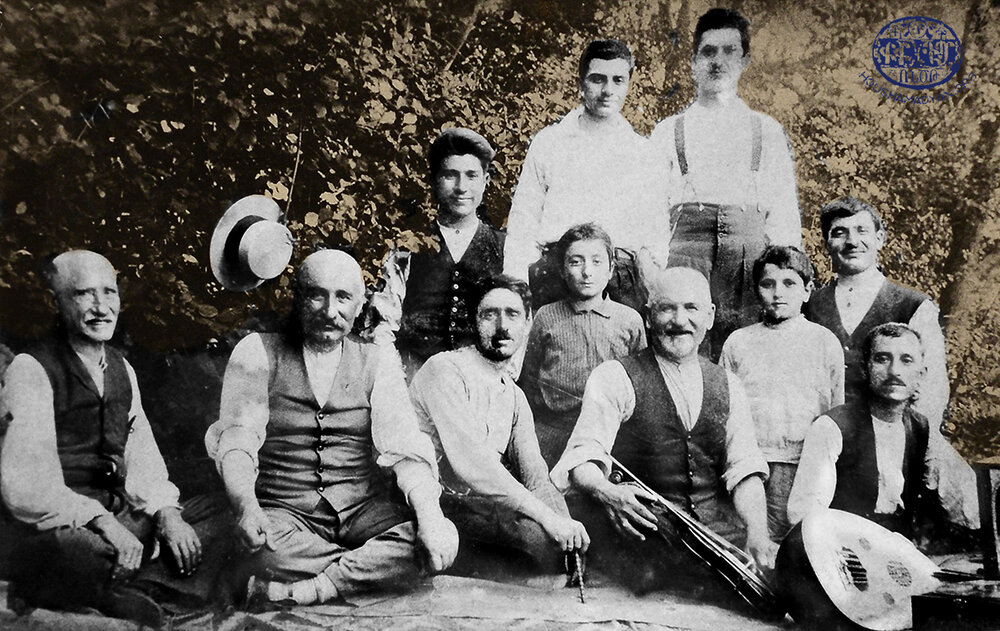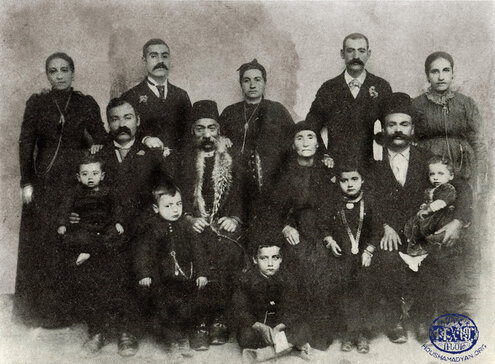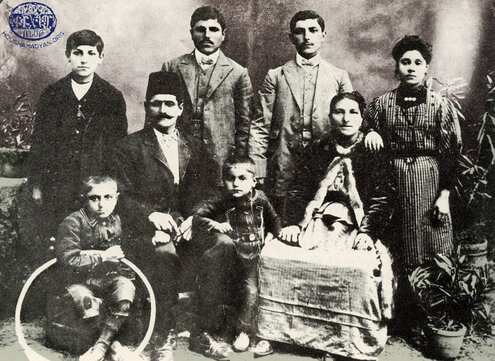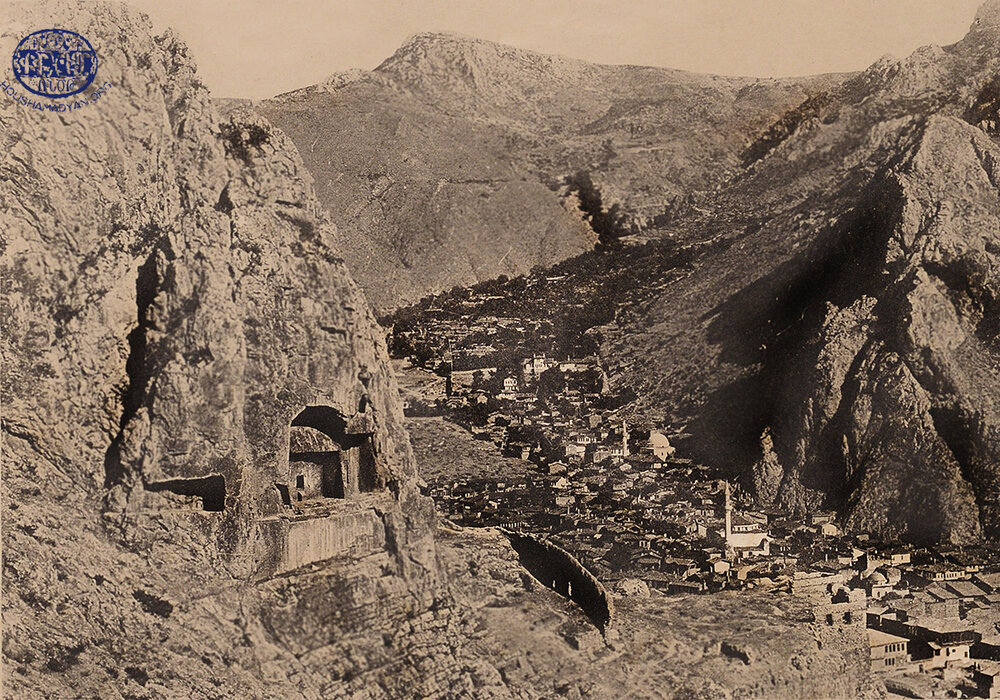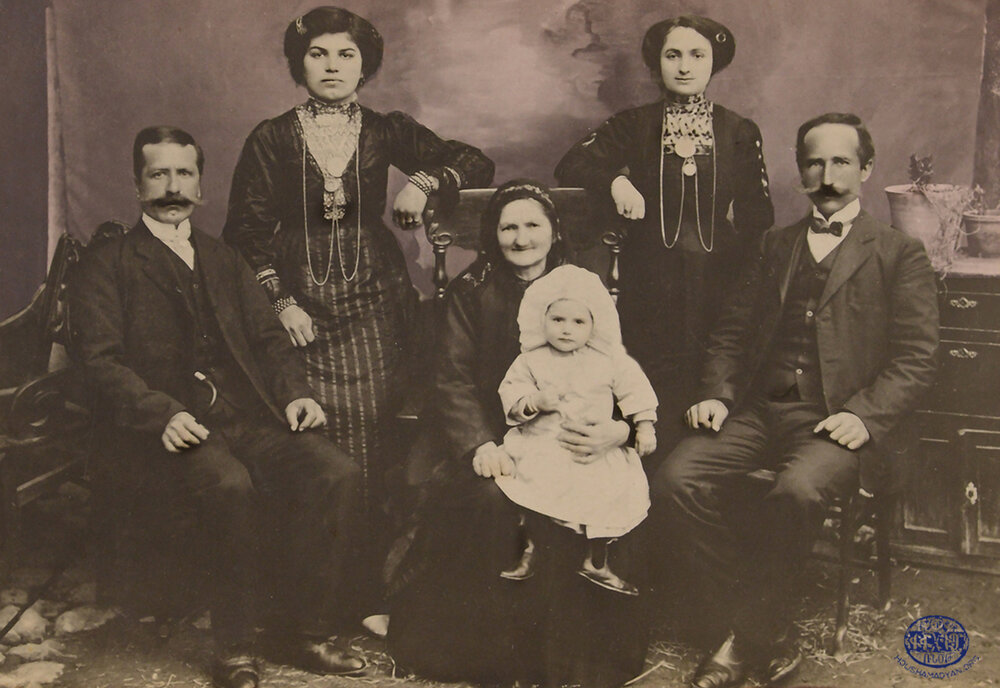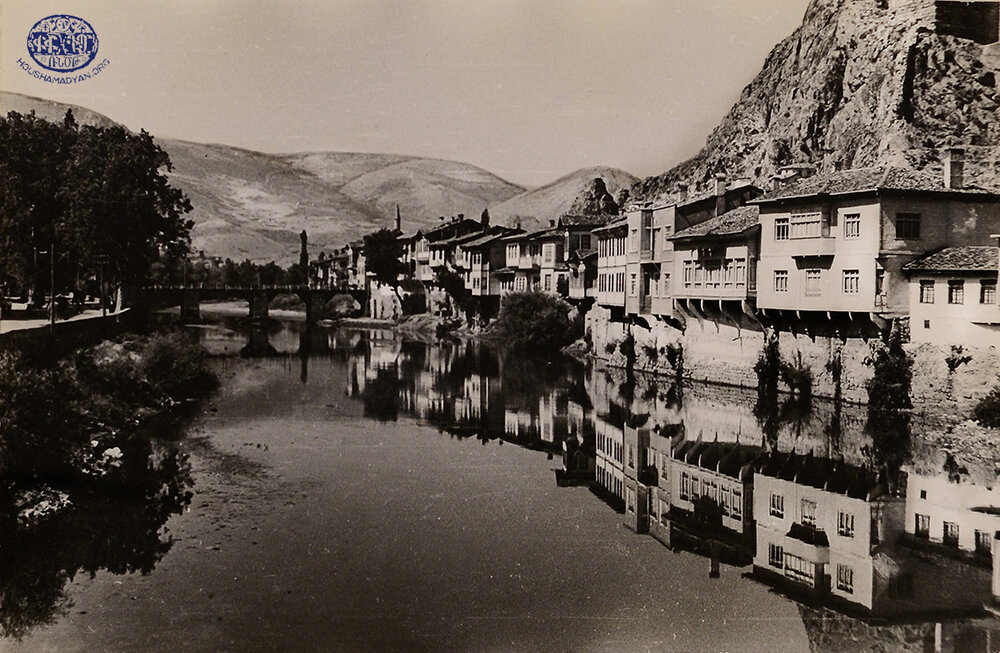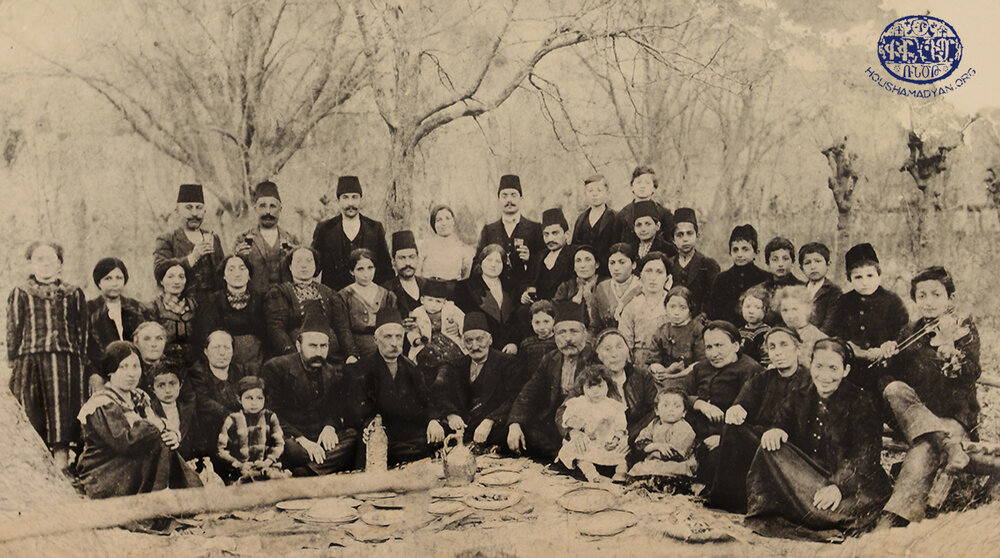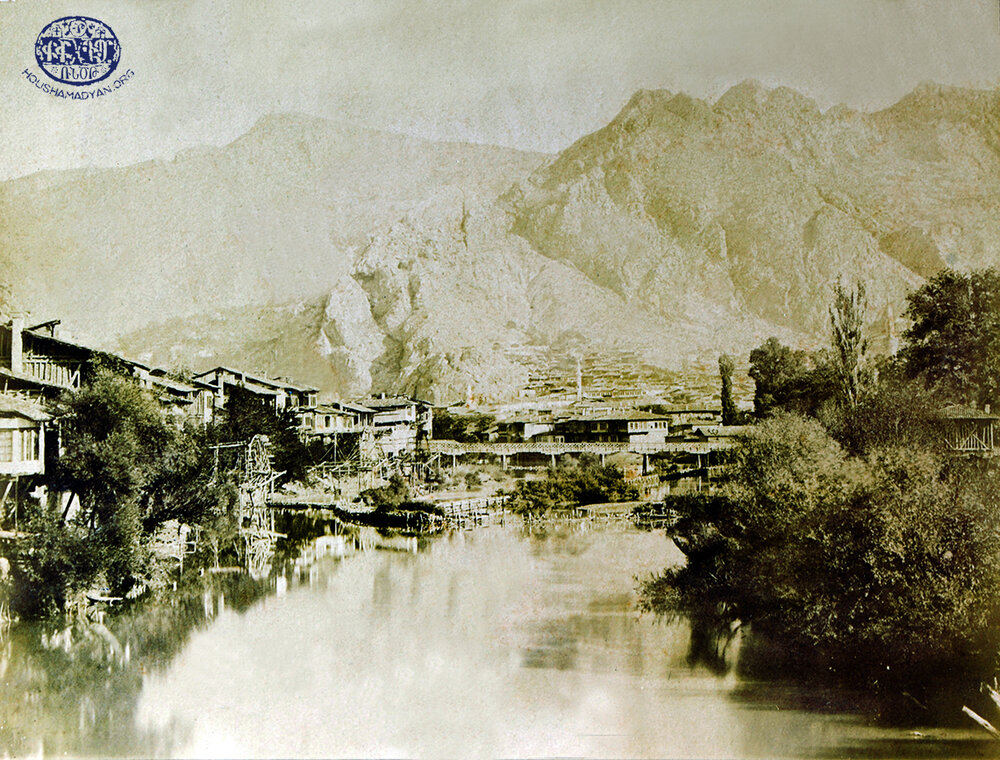Amasya – Holidays and Festivals
Author: Lory Tashjian, 13/09/2021 (Last modified: 13/09/2021) - Translator: Simon Beugekian

Like Armenians living in other cities and villages across the Ottoman Empire, the Armenians of Amasya had their own unique traditions and customs, which reflected their centuries-old lifestyle and values. These traditions and customs were in full view during various holidays, celebrations, and ceremonies. Although the holiday calendar of Amasya did not significantly differ from the calendar used in other Armenian areas, the locals had their own distinctive rituals and traditions, which we will describe in this article.
The Armenians of Amasya lived in a patriarchal society. For them, virtue consisted of respect towards elders, hospitality, and religious piety. Daily life in the city was closely intertwined with the church, which meant that religious holidays were celebrated with particular pageantry. Such holidays, aside from being occasions for church ceremonies and the celebration of traditions, were also occasions for gatherings, festivities, and feasts.

New Year’s Eve
This holiday was celebrated on the last day of the year. According to local tradition, it was dedicated to the victory of the Christian faith. Namely, in the fourth century, the Christians living across the Byzantine Empire were victims of intense persecution. The region of Caesarea/Kayseri/Gesaria was the main theater of these events. Christians were chased down in the streets and summarily executed. Many hid in their homes and waited for the wave of violence to die down. The homes in Caesarea were built close together, and they had flat, wooden roofs. This period of suffering saw many instances of mutual assistance. The locals used ropes hanging down from the roofs or down the chimneys to share supplies – grain, raisins, figs, and other food. The authorities finally put an end to the anti-Christian campaign. The Christians, now safe, rejoiced and felicitated each other.
To commemorate these events, Armenians solemnly reenacted them every year in Amasya on New Year’s Eve, accompanied by songs and poems written to memorialize the occasion.
New Year’s Eve was celebrated with great joy and enthusiasm. From early morning on December 31, calls of “Bogegh! Bogegh!” could be heard across the city. These calls came from bakers selling biscuits. Some bakers would spend the whole night awake, preparing the holiday cheoreg. The shop fronts would be adorned with rows of various dried and fresh fruits. In the afternoon, the market would be so crowded that it was difficult to move about. The men would usually close their stalls early in the day, then go shopping before rushing home. Meanwhile, grandmothers and their granddaughters would be busy preparing the meals that would break the family’s holiday fast.
At home, the gathering place on New Year’s Eve was the room with the chimney. It would be illuminated with lamps of various sizes and with candles in candelabras. A little after sunset, a four-legged holiday table, 40-50 centimeters in length, would be placed in the center of the room. The meal would be served on large, copper trays, alongside forks and spoons. It was not customary to serve the meal in individual plates for each person. The members of the family would sit around the table together, in order of age.
The wine flowed freely on this holiday. After the meal, the trays were taken away and the guests were served raisins, figs, chestnuts, cherez, hazelnuts, walnuts, and fruits. Each guest would light the candle placed before him or her. According to tradition, whosever candle went out last would be blessed with a long life. Afterwards, the young brides, children, and teens would stand in line with apples in their hands and kiss the hands of their elders, wishing them a happy new year. The elders, in their turn, would thrust metal coins into the apples, then return the apples to their owners. The feast would continue late into the night. The room would have to remain lit until dawn.
On the first day of the new year, it was customary for the Armenians of Amasya to visit the city market earlier than usual, believing that this would portend success in business for the rest of the year. As for the schools, instead of the usual classes, they would hold pre-organized celebrations. The children of well-to-do families would bring a bottle of high-quality arak, a plate of zerde [sweet pudding], or another gift for their teachers [1].
Another tradition associated with New Year’s celebrations in Amasya was vosgechour (“golden water”). The locals would rush to the city’s spring at the break of dawn, and whoever reached it first would see gold water flowing out of it [2].

Christmas
The local Armenians called this holiday Bzdig Zadig (“Little Easter”).
The celebrations began on January 6 of the old Armenian calendar and continued for three days.
The three Armenian churches of Amasya (the Holy Virgin, Saint Hagop, and Saint Nigoghos) held Christmas-Eve services on the night of January 5, attended by large crowds. These services marked the end of the Christmas fast. Still, on that day, the locals would only eat fish, rice pilaf prepared with plenty of butter, and cheoreg.
In the morning, regardless of the weather, families would dress in their best and rush to church. After the day’s services, all would congratulate each other, friend and stranger alike, with the felicitation “Merry Christmas, Baptism, and New Year.”
That day’s midday meal would include gatnabour, sweet pastries, and arak. The main courses would be keshgek (keşkek) and harisa. After the meal, it was customary for families to visit the homes of their relations, starting with the closest ones. These visits would begin with five or ten minutes of the guests asking after the hosts’ health, while the hosts served arak, pastries, and coffee. They would also fill their guests’ children’s pockets with fruits.
Over the three days of the Christmas celebrations, the city’s priests would visit and bless their parishioners’ homes, accompanied by a youth with a beautiful singing voice. During these visits, the hosts would set a table that included yeast bread, large Easter cheoreg, a salt box, a glass of water, and a saucer for incense. The members of the family would stand around the table, while the priest, after reading a passage from the Bible, would sing Khorhourt Mez yev Skancheli alongside the melodious youth. He would then bless the items placed on the table. Thereafter, the members of the family would kiss the priest’s silver cross and walk him to the door, where they would compensate him with a quarter mejideh or more. The singing youth would be remunerated with some loose change.
The sextons of the churches would also visit the homes of their parishioners. Each sexton would be accompanied by a donkey, with a basket hanging from each side of the saddle. The lady of each house would place a cheoreg, prepared specially for Christmas, into one of the baskets. The neighborhood waterman would receive the same present [3].
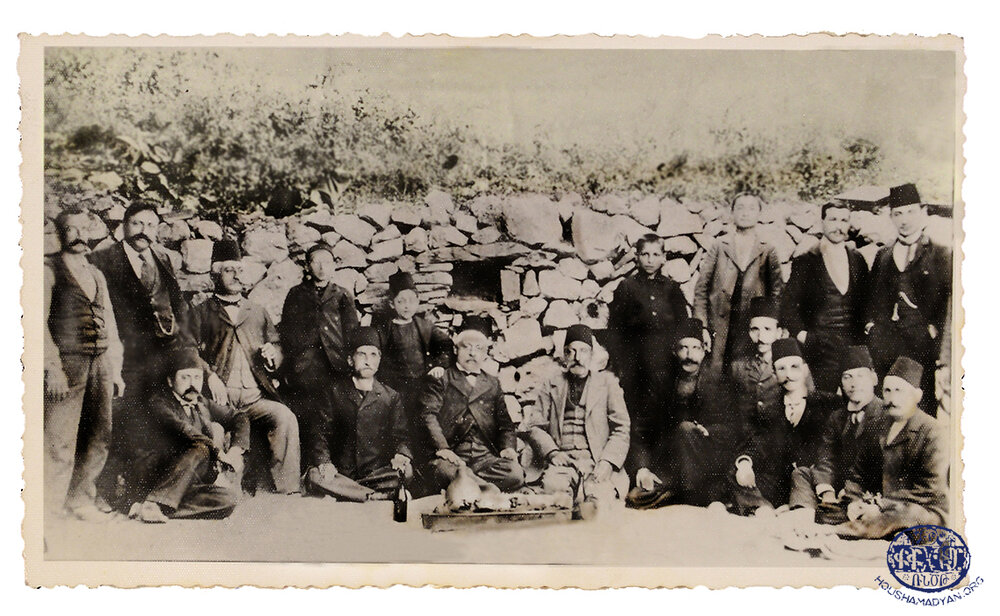

Deyaruntarach (Derndas; Candlemas)
This holiday was called Derndas by the locals. Candlemas was celebrated forty days after Christmas. In the evening, a djrakalouys [lighting of the lamp] ceremony would be held in the churches, and the parishioners would return home holding burning candles, lit from the church torch. Once back home, they would place the candle in the garden, on the branch of a rosebush or a tree [4].
Saint Sarkis
The young Armenian girls of Amasya treated Saint Sarkis with great reverence. The feast day of this warrior-saint was celebrated on February 6 of each year.
It was traditionally said in Amasya that Saint Sarkis was one of the forty warriors sent by the Armenian king of Cilicia, at the request of the Byzantine emperor, to fight in a war alongside the Byzantine army. However, when the warriors arrived at the emperor’s court, the latter, unaware of their reputation for bravery and insulted by their small number, decided to put them to the sword. He quartered them in a house for the night and provided each warrior with a female consort. The women were armed with razor blades, with which they were to cut the warriors’ throats once the latter fell asleep. All but one of the women accomplished their mission. The only survivor was the warrior named Sarkis. His consort had fallen in love with him, and the two fled together. Upon reaching the gates of Constantinople, they found one of the guards asleep. Sarkis killed him, and with supernatural strength, broke down the enormous metal gate. He and the woman succeeded in escaping the city together. For this feat, Sarkis was thereafter called “aghchig pakhtsnogh” (“maiden snatcher”), and the gate he had destroyed was called “chatlada kapou,” or “creaking gate.” After these events, Sarkis was sanctified.
On his feast day, young girls would pray and ask for a wish to be granted, and then fast for one to three days. On the last night of their fast, before going to sleep, they would place a glass of water at the head of their bed. If they saw Saint Sarkis in their dreams, they would consider their prayer to have been granted. They also believed that the saint would dip his sword into the glass of water. Upon waking up in the morning, they would drink the water and await the fulfillment of their prayers [5].
Poun Paregentan
This holiday was locally known as Mendz Bargentank [Big Paregentan].
The Armenians of Amasya, being a hospitable people, would invite, from the start of the Paregentan season, one or more families of distant relatives to spend the week with them. The invitation was reciprocated in the following year. On Monday, newlywed grooms would rent a chariot and head to their in-laws’ homes. They would pick them up and take them to their own parents’ home, where a feast would be organized. The in-laws would also bring gifts with them, including a fattened turkey and a large tray of baklava. Curious neighbors enjoyed watching the arrival of these guests.
The commemoration of the Vartanants Battle was held on Thursday. All three Armenian churches would hold services, including requiem services. Afterwards, the locals would enjoy a special meal. The main course would be a pastry called tertupats, prepared with a generous amount of oil, ground white flour, sugar, and white bekmez [mulberry molasses]. This Thursday was also the feast day of all who did not share a name with a saint.
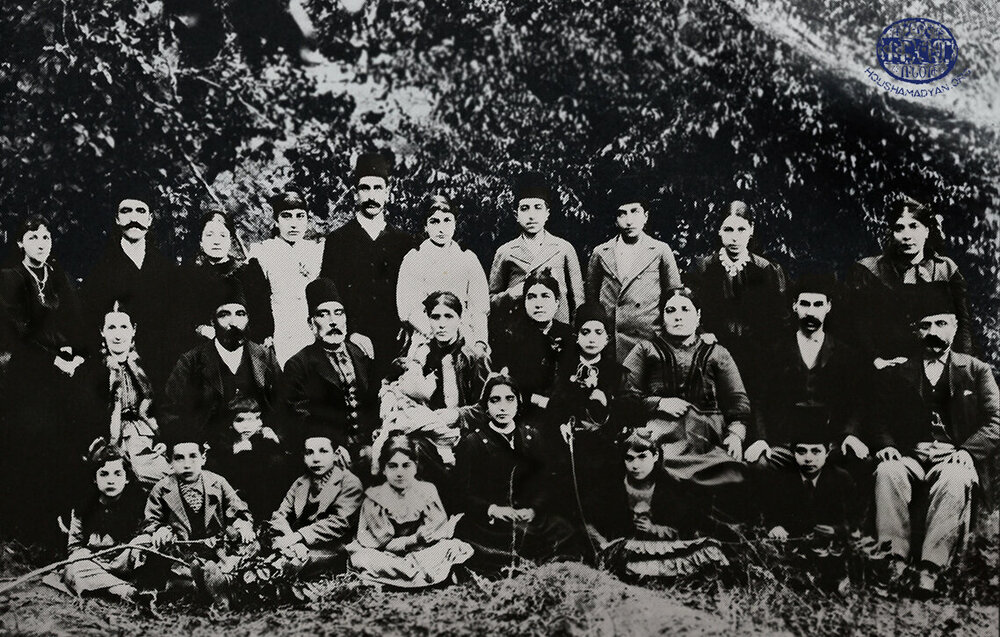
The main gatherings and feasts to celebrate Paregentan took place between Friday and midnight on Sunday. These celebrations culminated with the masked balls in the Savayid neighborhood, which was exclusively Armenian-populated. In the morning, people would gather near old ruins in a flat field, probably those of an ancient pagan temple. This site was called Khoz Verdin by the local Armenians. The crowds of participants would be of both sexes and of all ages. Many of them would be masked, and they would dance and sing to the music played by musicians.
The same jovial mood of singing, dancing, and music would reign at night in the homes of the Savayid neighborhood, where groups of masked revelers would pay surprise visits to Armenian families. Wealthy families would sometimes host more than a hundred guests in their homes. The night’s revelries would feature various acts and games. Notable among these was the sketch of the wolf and the sheep. The performance would begin when the guests heard the sound of a tambourine from behind the door, alongside a shepherd’s song. Suddenly, about 20 children and youth would barge into the hall, dressed in sheepskins. They would be followed by the shepherd, who would play the tambourine and sing traditional shepherding tunes. A few minutes later, a young man dressed in wolf hide would storm in and attack the sheep, causing mayhem.
Another sketch involved the entry of beggars into the house. Thus, the host’s servant would inform his master that two beggars, half-frozen in the storm outside, are at the door and wish to enter and warm themselves. The host, moved by pity, orders them to be let in. Two beggars, dressed in rags, enter the hall. The servant places the heater in front of them, while the two converse in a foreign language. The crowd of guests awaits the departure of the newcomers, but to their surprise, the beggars begin plucking out the lice from their bodies and throwing them into the heater, which causes the fire to crackle. This arouses the disgust of the revelers, especially the host. Eventually, he orders the servant to expel the beggars. The latter, instead of thanking the host for his generosity, leave the hall with obscene gestures.
Another Paregentan tradition was the “invasion” of homes by groups of disguised and masked youth. These would reveal their identities to one of the homeowner’s sons, then invade the hall where the celebrations were being held. The leader of the group would wear a shalvar of white cloth and a long shirt, as well as the mask of an old man. He would pretend to have a lame leg, would hold a toura, and have a belt around his waist with several bells hanging from it. The toura was a snake-shaped roll of cloth, with knotted balls at each end. The “old man” would walk arm-in-arm with a youth wearing the mask of a beautiful girl. During the performance, this beautiful girl would play the role of the old man’s wife. Ahead of them would walk a black slave, with blackened face and hands, holding a broom with a long handle, and sweeping the floor ahead of his master and mistress. The group would sometimes also be accompanied by one or two musicians. The old man was called songhour, and he was supposed to be his young bride’s jealous, tyrannical husband. The songhour and the guests would engage in humorous conversation, eliciting much delight and laughter.
The host would then suggest that the old man dance, and the music would begin. The sontour and some of the guests would start dancing, until the old man would tire and sit on a chair. Then the guests would ask his wife to dance. Once she began dancing, the jealous songhour would become enraged, jump to his feet, and strike those dancing with his wife with the toura he carried. At the conclusion of this performance, the lady of the house and the servants would offer the guests a jug of spirits and a turkey prepared with wine.
Such performances and celebrations continued until midnight on Sunday. Another tradition was for disguised or masked guests to hand their hosts notes that contained satirical or humorous poems that lampooned them.
A final pre-Lent dinner would be organized one hour before midnight, on Sunday. Lent would begin at midnight, and throughout its 40 days, the consumption of animal fat and meat was considered sinful. Any food left over from the previous days of feasting would be donated to indigent Turkish families.
The first day of Lent marked the drawing of the altar curtains, called pakhla khoran by the locals. Early in the morning, a man from each household would go to the market and buy halva made with tahini, which would be the first breakfast of the Lent season for the family and its guests.
The people of Amasya fasted for seven weeks, until Easter. To count the days, children would hang an onion from the ceiling with turkey feathers stuck into it. At the end of each week, they would pluck out a feather.
Amasya’s women had a custom of lunching at the home of one of their relatives exactly halfway through Lent, immediately after the day’s church services [6].

Palm Sunday, the Holy Week, and Easter
The people of Amasya called Palm Sunday Charzartar. According to C. Y. Simonian, author of the book Houshamadyan Bondagan Amasyo [Memory Book of Pontic Amasya], this term was a corruption of the term dzarzartar, which had its origins with the pagan Armenians’ veneration of trees. The Turks of Amasya referred to this holiday as “söğüt kırma günü” (Day of Cutting the Willow Tree’s Branches), most probably because the Armenians of the city would cut the branches of trees to prepare for the holiday. On the Saturday preceding Palm Sunday, Armenian youth would go to the banks of the river and return with willow branches.
On Sunday evening, in the presence of large crowds, the trunpats (unveiling of the altar) ceremony would be performed. Beginning in the early morning hours of Holy Monday, women and girls would be tasked with cleaning the church. The churches in Amasya did not have pews, and the floor was of polished stone. This floor would be covered first with mats and then rugs and carpets. Each man of each family had his own cushion. Women worshipped in the upper gallery, where, like the men, each had her own cushion on the carpeted wooden floor. Once a year, female parishioners would take the cushions, rugs, carpets, and mats outside and clean them. Meanwhile, another group would sweep the floor, then scrub it with water and rags. Families that did not contribute to this work would instead provide food for the workers’ lunch.
Maundy Thursday was a public holiday, and the locals attended midday church services. Schoolchildren confessed and received communion. The ceremony of the washing of the feet took place in the evening.
On Good Friday, each family would dye eggs red for Easter. In the evening, a special ceremony was held commemorating Christ’s burial. A tombstone, bedecked with flowers, would be placed on the main altar of the church. At the end of the ceremony, the worshippers would throng to kiss the tombstone and the Bible and cross placed beside it, at which time they would also slip a monetary gift into the alms box.
On the evening of Holy Saturday, the churches held Easter Vigil, Easter Eve, and djrakalouys services; and celebrated the Divine Liturgy. Supplicants praying for the healing of their illnesses or seeking other types of divine intervention would purchase thick candles, about a meter long, carve their names and their prayers to God on the lower portion, then donate the candles back to the church.
These church ceremonies marked the end of Lent. Children and youth would eat the red eggs that they had kept in their pockets. That evening’s meal would consist of fish fried in plenty of oil, rice pilaf, Easter eggs, and cheoreg. Wine was consumed liberally alongside the meal.
The following day was Easter, or as it was locally known, Mendz Zadig. The church bells would peal, inviting parishioners to service. The city’s Armenians, formally dressed (often wearing new clothes), would rush to church. On this day, the hymns would be performed by a quartet. In the afternoon, the priest would visit homes to bless them, after which families would visit each other. The hosts would offer their guests arak, liqueur, desserts, and coffee.
The day after Easter, on Monday morning, a requiem service was held in the churches in memory of all the dead.
The Easter Holiday extended over three days, during which areas in Armenian neighborhoods that served as squares were filled with people holding egg-tapping contests. The church sextons would visit the homes of their parishioners and receive the customary Easter cheoreg. Cheoreg was also distributed by Armenians to their Turkish or Greek neighbors [7].
Saint Toros
This holiday was celebrated during the first weekend of Lent. Traditionally, a pre-holiday ceremony was held on Saturday night; then, on Sunday morning, worshippers would visit the grave of Saint Toros [8].
The grave of Saint Toros was one of the notable pilgrimage sites of Amasya, located east of the city at a distance of about an hour’s walk. On the holiday of the Assumption of Mary, the locals would visit this grave and celebrate the Divine Liturgy under a tent [9].
Hampartsoum (Vidjag; Feast of Ascension)
The Armenians of Amasya called this holiday Vidjag. It was a public holiday. The city’s market and schools were closed. The holiday was celebrated forty days after Easter.
The holiday coincided with the harvest season of the first of the spring fruits, the cherry. Many families would spend the day in their orchards, which were also the best place to witness the famous vidjagakhagh (game of lots).
According to local custom, the hosts of the gathering would be responsible for providing the bucket for the vidjag. This bucket would be filled with water and would also contain different types of flowers. The flowers would be picked from seven different hills, and the water would be collected from seven different springs. The bucket would be left in the open air overnight so that its contents could “mayalanmish ane,” or ferment.
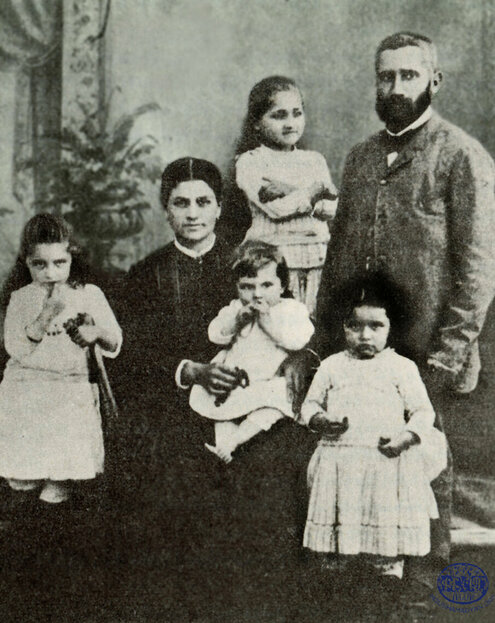
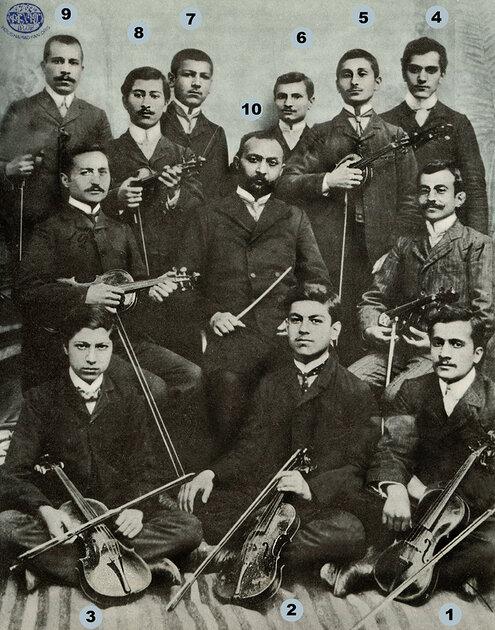
The vidjag would be performed on the following day. The bucket would be placed in the shade of a tree. Each participant, old or young, would place an object in the water. Each object had to be unique and could not resemble another. Items that were commonly used by participants included rings, earrings, razors, keys, bracelets, etc. A young girl was chosen among the participants, and the bucket was placed before her. Her face would be covered by a veil, so that she could not see the objects she extracted from the water. An elderly woman would hand her a handheld mirror. The girl would stir the contents of the bucket with the mirror, while at the same time the elderly woman recited a half-Armenian, half-Turkish chant, which can be translated thus:
I tossed a mirror into a heart,
And it reflected the image of a lark.
Pull, my girl, pull. [10]
This chant marked the start of the game of vidjag. After this recitation, the other older women in the circle would join in with their own chants and adages, both in Turkish and the local Armenian dialect. The subjects of these chants varied, but they usually involved well wishes, praise, satire, mockery, and the subjects of love and fortune. After each chant, the young girl would remove an object from the bucket. The owner of the object would rejoice if the chant recited before the removal of the object was favorable, and would be felicitated by the others for her good fortune. On the other hand, if the object was removed after the recitation of an unfavorable chant, its owner would be dejected, and the other participants would attempt to console and comfort her. The length of the vidjag ceremony would depend on the number of participants. It would be held in a cheerful atmosphere of conversation, humor, and excitement.
One of the first chants recited during the vidjag was:
Vidjag, vidjag, vosgi godjag | Vidjag, vidjag, golden button, |
Other chants and quatrains soon followed:
Mandja tri odjakhu, | I put the food on the fire, |
Vaze drdosh, vaze, | Run, drdosh [a female beggar], run, |
Antin tarnam dour Asdvadz, | Grant me my wishes when I turn that way, God, |
Erginken banlik ungav, | A key fell from the sky, |
Bartsu bartsin vra, | A pillow on top of a pillow, |
Erginken banlik ungav, | A key fell from the sky, |
Turkish quatrains used in the vidjag gameincluded [11]:
Baca baca gezerim, | Grant me my wishes when I turn this way, |
Sıyırdım çıktım asmaya, | I squirmed up the vine shoot, |
Ev yaptım ben yaptım, | I built a house for myself, |
Deve deve güderim, | I’m a shepherd for seven camels, camels, |
Mercimek kile kile, | I measure the lentils bushel by bushel, |
Kazan kazan kavurma, | Pots and pots of ghavourma, |
Hey miltani miltani [miltanlı], | You who wear the miltan [a type of coat], |
Teptim sandık açıldı, | I gave the trunk a kick, |
Elim çaldım zeytine, | My hand struck an olive, |
Yedi deve yolladım Mısır’ın hazınasına [hazinesine] | I sent seven camels to the treasury of Egypt, |

Vartavar
This holiday was celebrated on July 15 of each year. During morning services, the church deacons would spray holy water on the faces of the worshippers. After the services, families would share a meal, and many would visit the orchards on the banks of the river. The men and boys would bathe in the river and drench each other with water. Those who had pools or fountains at home would similarly drench each other [12].
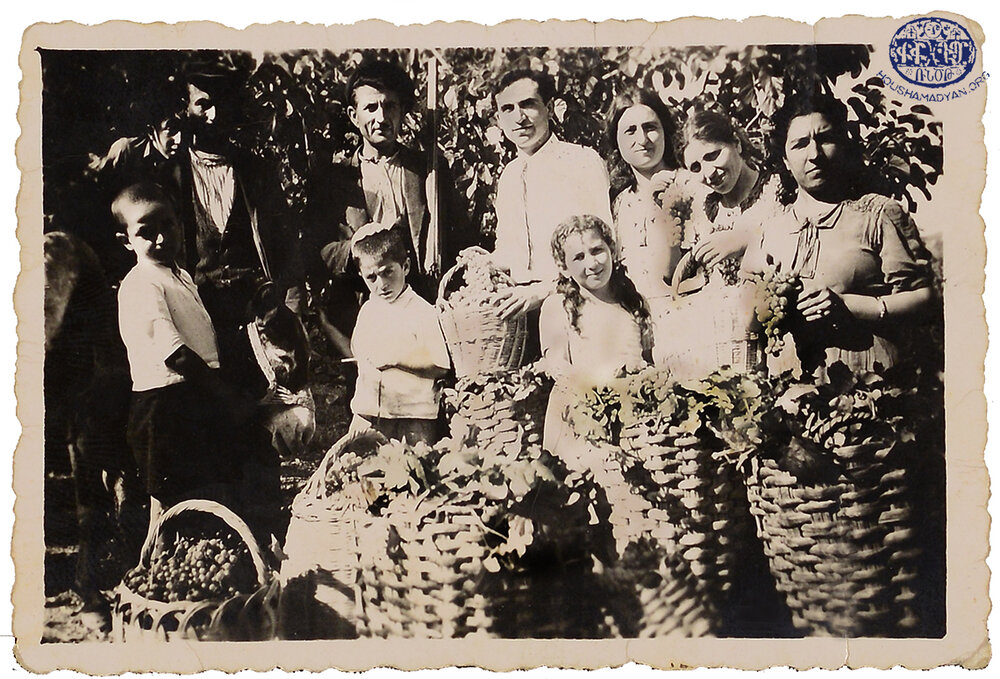
Assumption of Mary
This holiday was celebrated on the nearest Sunday to August 15 of each year. Large crowds would gather in the courtyard of the Holy Virgin Church, located in the Savayid neighborhood, which was exclusively Armenian-populated. An equally large crowd would gather in the church’s graveyard to hear the service.
After the church service, it was time for the khaghoghorhnek (blessing of the grapes) and madaghorhnek (blessing of the sacrifices). Thereafter, the blessed grape would be distributed to the attendees. This would motivate many of the faithful to refrain from eating grapes throughout Lent until they ate the blessed grape distributed on this holiday. Ceremonies of khaghoghorhnek and madaghorhnek were also held in Amasya’s two other Armenian churches, Saint Hagop and Saint Nigoghos [13].
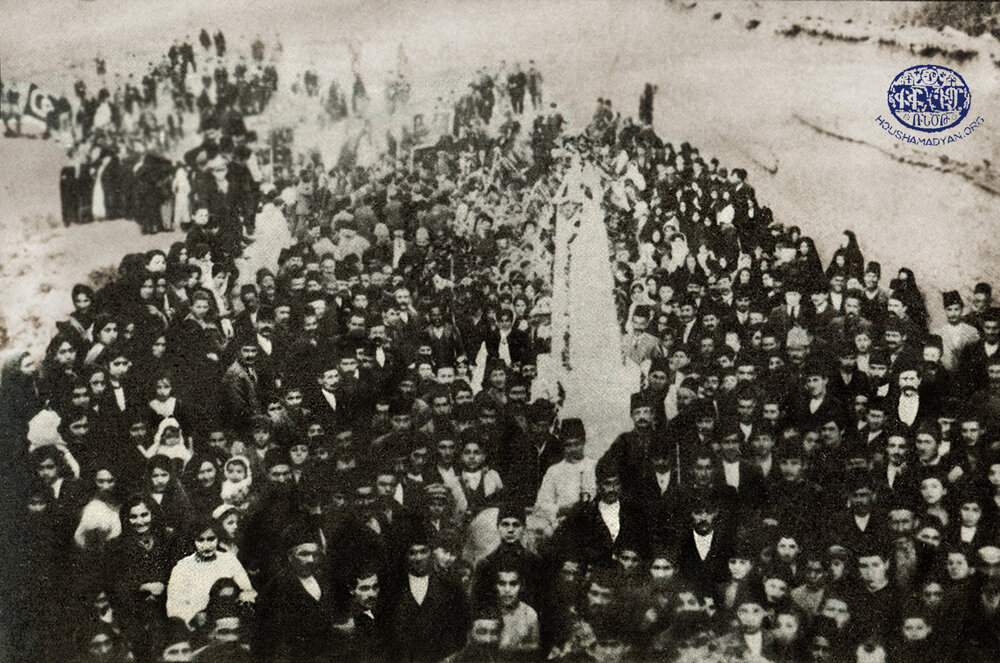
Khachverats (Exaltation of the Cross)
This holiday was celebrated on the nearest Sunday to September 15 of each year. The grape harvest season generally began in late August and ended around this date. Customarily, Amasya’s Armenian families would finish harvesting and processing their grape by the holiday – in other words, they would already have made the wine, bekmez, basdegh, and sharots. After extracting the grape juice, the remnants of the fruit would be collected and poured into a special vat, where they would be left to ferment – this was the first stage of distilling liquor, or as the Armenians of Amasya called it, urakhi (arak).
The non-Armenian population of Amasya had come up with a Turkish saying that concerned this holiday: “Haç, içeri kaç!” (“Cross, come inside!”) It was a unique way of indicating that the holiday marked the start of the cold season [14].
Saint Kevork
This holiday was celebrated on September 30. The local Muslims called it khdrellez. Khdur or Khzur was one of the most powerful saints revered by the local Muslims; and was thought to come to the aid of believers in times of need. Armenians would say “Khzur has saved the day” when someone overcame difficulties or survived an ordeal [15].
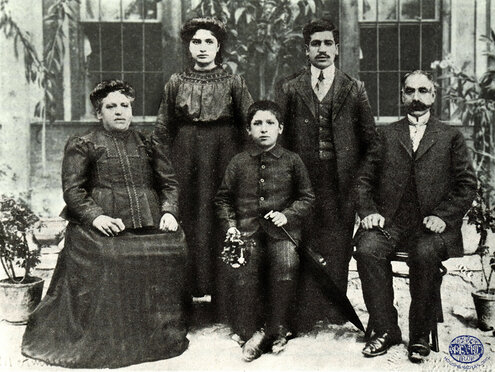
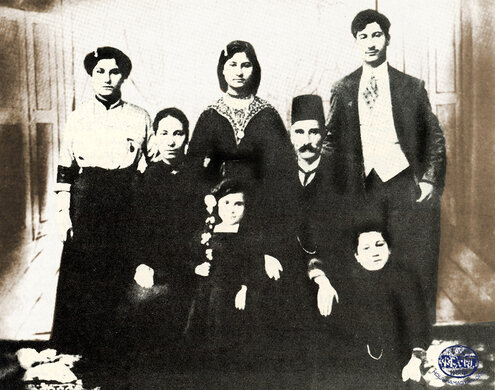
Saint Nigoghos
The feast day of Saint Nigoghos was observed on November 15 of the old Armenian calendar. The Divine Liturgy was celebrated in the Saint Nigoghos Church of the city, followed by a sermon [16].
Saint Hagop
The feast day of Saint Hagop was observed in December. The Divine Liturgy was celebrated in the Saint Hagop Cathedral of the city, which was also the seat of the local prelacy. The people of Amasya believed that if it had not snowed on the feast day of Saint Nigoghos, then it would invariably snow on the feast day of Saint Hagop. Upon seeing the snow fall, they would say, “Saint Hagop’s beard has gone white” [17].

- [1] Kapriel H. Simonian, Houshamadyan Bondagan Amasyo [Memory Book of Pontic Amasya], Saint Lazarus Island (Venice), 1966, pp. 905-907.
- [2] Ibid., p. 922.
- [3] Ibid., pp. 907-908.
- [4] Ibid., p. 916.
- [5] Ibid.
- [6] Ibid., pp. 908-911.
- [7] Ibid., pp. 911-912.
- [8] Ibid., p. 916.
- [9] Ibid., p. 354.
- [10] Ibid., p. 913.
- [11] Ibid., pp. 913-915.
- [12] Ibid., p. 916.
- [13] Ibid.
- [14] Ibid., pp. 916-917.
- [15] Ibid., p. 917.
- [16] Ibid.
- [17] Ibid.
